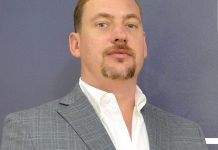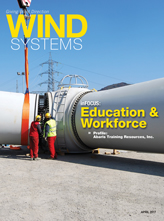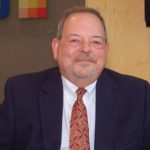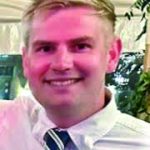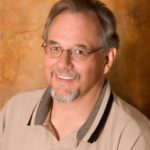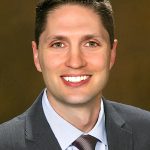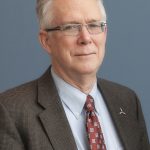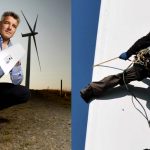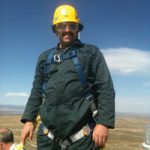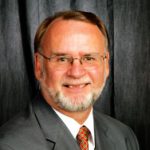Give us a little history of the National Wind Institute?
In 2003, Texas Tech was awarded an NSF-IGERT grant to create an inter-disciplinary Ph.D. program in Wind Science and Engineering, and started the program. It was offered by the Texas Higher Education Coordinating Board in 2007, and I actually joined it in fall 2006, and it’s still going today. It took four years to begin the program at the Ph.D. level, and then to backwards develop into a master’s and an undergrad program with funding in 2009 from the Texas Workforce Commission.
How long have you been with NWI and what do you do there?
I was a student from 2006 to 2010. And then I worked for an electrical engineering company from 2010 to 2014. The wind program was growing, so I was pulled back into teaching the summer of 2014. (I was a public school math teacher for 12 years before I came back for my Ph.D.) The classes I teach for the undergrad are both junior and senior level. It’s the grid integration, Science and Technology, and the cap-stone class where we take them through a three-year process of project development in about four months. And they get to do their own mock projects. Everybody is assigned a location and data, and that’s it. And they have to do everything.
How has the study of wind changed over the last year?
Our students take a law and policy class, and they keep up with all the different policies and what affects what and who and how and that kind of stuff — both on the energy side and the wind owner’s side and the laws and policies that then apply to wind energy. And we update it in all of our classes as things change just to make sure students are up-to-date and current at all times. Of course, the PTC affects the wind industry heavily, but it tends to be a two-year lag from what’s happening and its effects. They change a policy to this, but by the time it’s implemented and a new project comes in under that new policy, it’s 18 to 24 months later.
How are you transforming NWI into the go-to place for wind studies both nationally and internationally?
We are the only accredited undergrad degree in wind industry in the United States (Bachelor of Science in Wind Energy). There’s only one other, a master’s program, and it’s only recently been accredited. We have the only Ph.D. program in the U.S. So, our students come out very high quality. They understand the whole big picture, not a narrower view of economics and finance, or just the policy and law, or just data analysis. They know all of it very, very well.
How are you strengthening your ties with the industry?
We have several companies that we work with. One of our requirements is that students do an internship. It doesn’t have to be with a wind-energy company, but it does have to be energy-related somehow. They can go work for Encore or a local co-op applying their skills. So, as long as they do something wind or electrically related, it counts.
But there are also students who get involved on the construction side where, they call them a field engineer, but really they are an on-site manager. And there are 75 companies that we have worked with where students have gone out, done internships with them, and they come back saying, “He/she did great; we want more.” Often times, the student is hired full-time, or the company comes back wanting more interns because they are so diverse in what they can do for an employer.
Can you give an example?
One student went to work with BP Wind. They took her to a couple of projects. And they were explaining some issues they were having at one particular project. So she implemented some things to help correct their problems. She did such a great job, they said, “Here are these three other projects, why don’t you work with that?”
And she realized they were the exact same problems from the other place, and she backtracked it to their supply area. Between their various projects, they had one single supply depot where they were getting all their parts. Basically, BP Wind had a huge warehouse full of components that they would send out to the projects as needed. They couldn’t track them; they couldn’t order them; they didn’t know how many they had; where they were located; anything within the warehouse. And it was really causing problems at their projects.
So she streamlined the warehouse, basically reorganizing it. She created QR codes to go with each part, and provided that system to each of the projects. So whenever they needed something, they snapped a picture of the part. It alerted the warehouse, and it was shipped that same day in just a few minutes. And they found close to $300,000 worth of components they didn’t know they had. They streamlined everything to the point where within a day or two of order, they received the parts, so turbines were up and running a couple of days later instead of a couple of weeks later still waiting for a part when they didn’t know where it was. So they said, “We want you to come back permanently, and we want you to help us do this, this, and this.” That’s not necessarily what we trained her on, but all those skills were then transferrable back to that.
In what ways are you enhancing how you make wind programs available?
They are constantly changing and evolving. A couple of weeks ago we got the authorization for what was started almost nine months ago, basically, that we can go fully online now for the undergraduate program. We can now reach more people. They don’t have to be on campus to study with us. They can still work their job wherever they’re at and get this background.
We also have a Graduate Certificate that is available on-line as well as face-to-face. It consist of 15 graduate-credit hours of study in wind energy and then electives — electrical focused, economics focused, risk-modeling, and project management.
Also, anytime there’s any type of policy changes that happen, we discuss them in our classes. The decreasing rate of the PTC, the students understand that. OK, this is now what’s happening, how will this affect us? They keep up with avian impacts. Whatever the current news is, they keep up on that.
How are you leading and supporting wind-related research?
We have several projects that are ongoing and developing. There was one where the atmospheric science department built a mobile KA-band radar. It’s a really, really high frequency radar. It was originally designed to look inside super-cell thunderstorms. Thunderstorms around here are six to eight weeks long, so what do you do with the rest of the time? So they said, let’s go down to the coast and watch hurricanes come in and see how they transition from off-shore to on-shore. So that killed another three months; now what?
So we asked, “Can you look at the wind’s flow through a wind project? What does it look like? How does it behave?” And they’ve turned it into a really neat thing where they can go to any wind project, set up these KA-band radars, and they can see the wind flow through a project and see the wakes of one influencing one down line, either with one waking the one behind or waking on the side of it and increasing speeds to the back turbine.
And that led into the next area of research, which is wake steering. If that front turbine is interacting with one behind it, can we yaw it a few degrees? We might lose a couple hundred watts of production, but the one down line isn’t being waked and possibly increasing wind speeds, so you get higher production. And that’s what they’re calling a smart wind farm.
We also have three 300 KW turbines out at Reese Technology Center. They are separated by three diameters, five diameters, and seven diameters to specifically look at the wake from one to the other and look at the structure and the dynamics of it. Is there a difference between stable, unstable, or neutral conditions? And how would those conditions affect the forces induced on those turbines?
Also out at Reese, we have several pad sites where we have worked with Alstom, GE, and Gamesa, where they can set up their turbine, interconnect to the grid at distribution voltage, and do their certification, so they can begin selling them in the U.S.
Students can also work on the HAWKS (Hyper-Accelerated Wind-Farm Kinematic-Control Simulator) project. They have a small turbine that they are running between 5,000 and 6,000 rpm in order to simulate a turbine in real life. And they look at that wake steering in the wind tunnel to see what effect it has and adjust the yaw in order to see what happens to the wake to the turbine down line.
![]() (806) 742-3476
(806) 742-3476
![]() www.depts.ttu.edu/nwi
www.depts.ttu.edu/nwi
![]() /NationalWindInstitute
/NationalWindInstitute


















